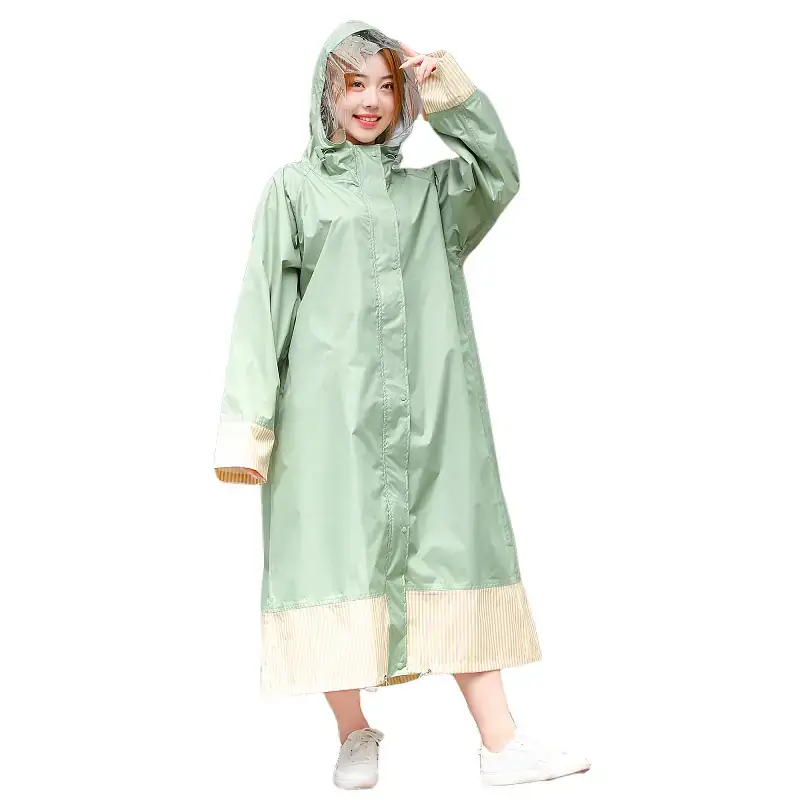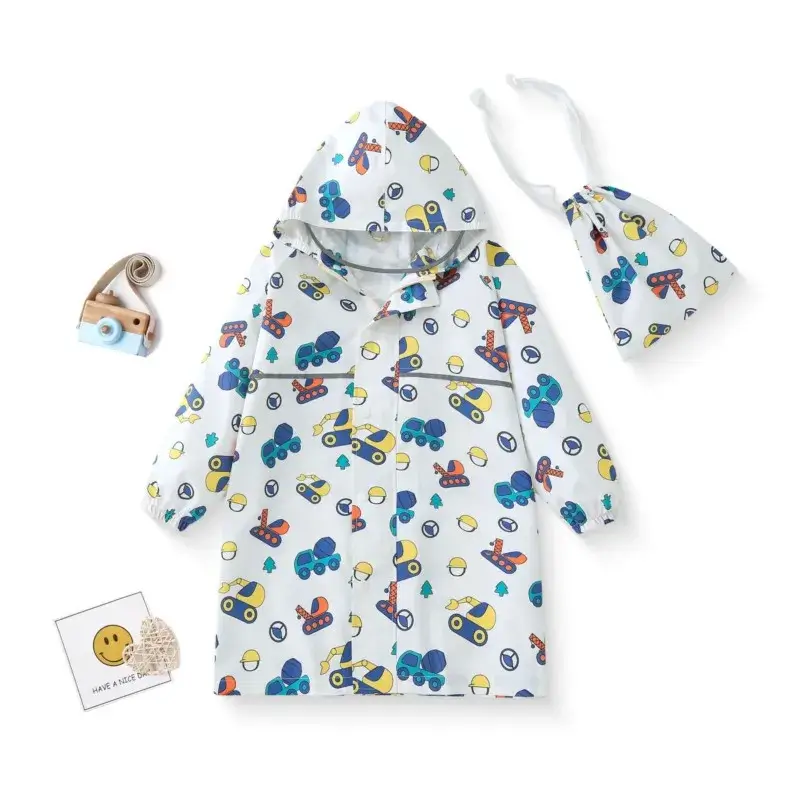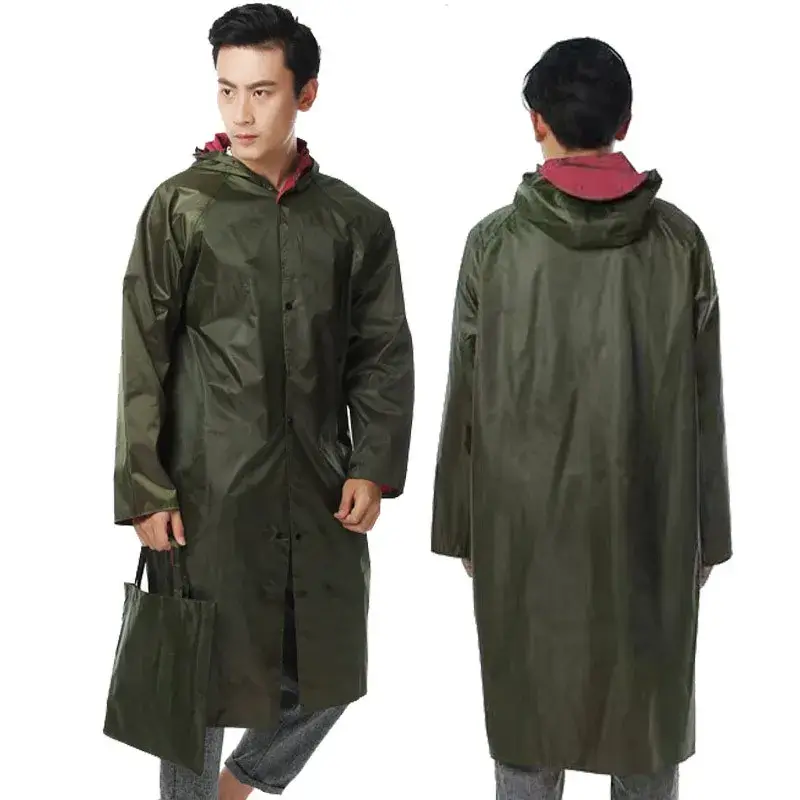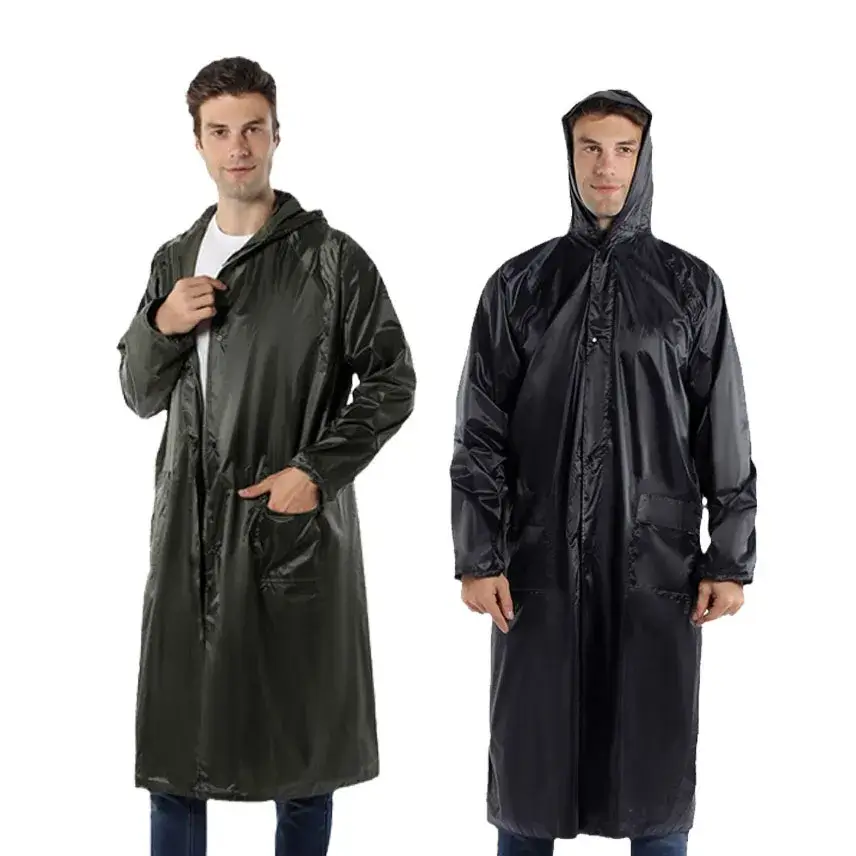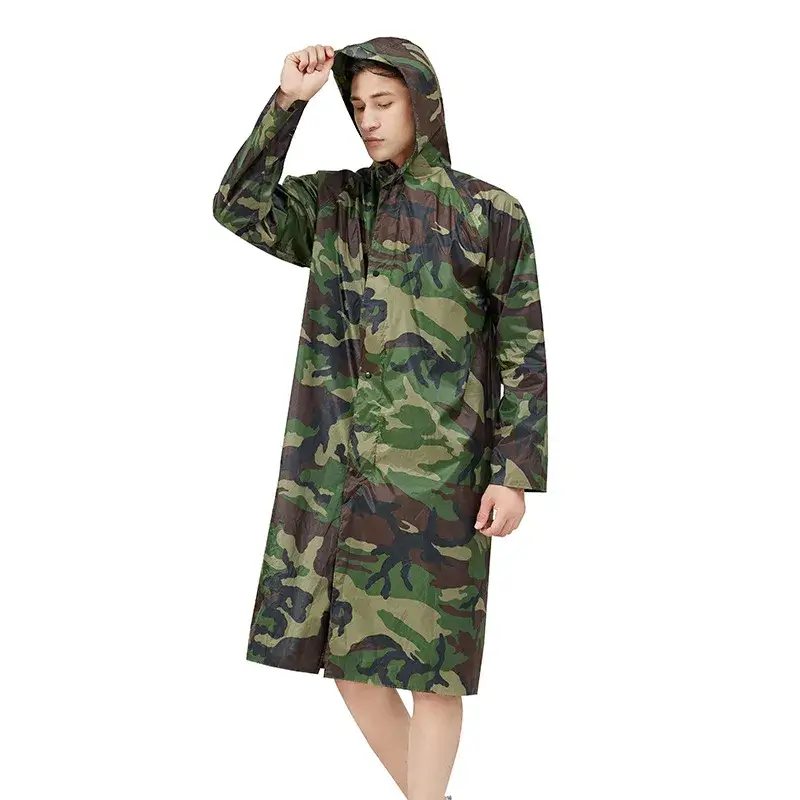Choosing the right raincoat is important to ensure that you stay dry and comfortable in the rain, but it can be a bit confusing with so many options available. When it comes to children’s raincoats, for example, it’s essential to understand the different types of materials and features that influence the raincoat’s performance and durability. At here, we aim to help you make an informed decision. Let’s take a closer look at how to correctly select a raincoat and provide tips for proper maintenance.
Understanding Different Materials Used for Raincoats
- Jelly-like Semi-Transparent Plastic Raincoats
If you come across a raincoat made of jelly-like semi-transparent plastic, it is likely to be cheap and fragile. These raincoats are inexpensive but tend to tear easily and provide minimal protection against the elements. While they are a low-cost option, their durability and comfort are often compromised. - Nylon with PVC Coating (Nylon + PVC Raincoats)
Raincoats made from nylon with PVC coating offer a better balance of affordability and durability. These raincoats are made by applying a PVC waterproof layer to the interior of nylon fabric. This material is strong, resistant to tears, and affordable. This makes nylon + PVC raincoats the most common choice for rain gear. - Waterproof and Breathable Fabrics (Waterproof, Moisture-Permeable Coating)
Some high-quality raincoats, such as those used by police officers and mountaineers, feature waterproof, breathable fabric. These raincoats have a waterproof coating with millions of tiny pores, allowing water vapor to escape while preventing rain from entering. The main downside is that these raincoats are typically very expensive due to the specialized fabric technology.
Key Considerations When Choosing a Raincoat
1. Choosing the Right Size
Raincoats usually come with a size chart based on height, but sizes can vary between brands. It’s important not to rely solely on the size of your previous raincoat when purchasing a new one, as sizing discrepancies may occur. Ideally, you should try on the raincoat before purchasing. If trying it on isn’t possible (such as in a store that doesn’t allow trying), a good rule of thumb is that if you usually wear an M-size shirt, opt for an L-size raincoat. This will provide better coverage, especially if you are layering the raincoat over thicker clothing in colder months.
2. Maintaining Waterproof Coating
Raincoats made of nylon and PVC typically feature a water-repellent coating on the surface that helps the water form droplets and roll off, speeding up drying time. However, after multiple uses, the water-repellent coating naturally wears off due to exposure to rain. To protect this coating:
- Do not rub or scrub the raincoat when cleaning.
- Use a damp cloth to wipe it clean or rinse it with water.
- Dry in the shade rather than direct sunlight to avoid degrading the material and coating.
Over time, if the coating wears off, you can reapply a water-repellent treatment to restore its effectiveness.
3. Storage and Care Tips
- Rubber Raincoats: When storing rubber raincoats, it’s best to insert newspapers between folds or use baby powder to prevent the coat from sticking together. This helps preserve its quality over time.
- Plastic Raincoats: If you notice minor wrinkles in your raincoat, hang it on a clothes hanger to allow the creases to naturally smooth out. For deeper wrinkles, you can soak the raincoat in water around 70°C (158°F) for 2 minutes, then lay it flat to dry.
- Repairing Holes in Plastic Raincoats: To fix a tear in a plastic raincoat:
- Align the edges of the tear.
- Place a piece of glassine paper on top.
- Use a heated iron rod to gently press the paper and fuse the plastic together. Be careful not to overheat the material to avoid burning it.
- Alternatively, use a patch of similar plastic material and heat-seal it over the hole using the same method.
- Removing Odor from Rubber Raincoats: If your rubber raincoat has an unpleasant smell, soak it in a mixture of hydrogen peroxide and water, then hang it to dry. This method helps remove any lingering odor.
Conclusion: Choosing and Caring for Your Raincoat
Choosing the right raincoat involves more than just picking the first one you see. It’s important to consider factors like the material, waterproof performance, and size to ensure you get the best value for your money. Nylon + PVC raincoats offer the perfect balance of durability and cost, while waterproof, breathable fabrics provide advanced performance at a premium price.
For proper maintenance, always follow the care instructions for your raincoat to extend its lifespan. By storing and cleaning it correctly, you’ll keep your raincoat in excellent condition, ensuring it continues to protect you from the rain for years to come.


